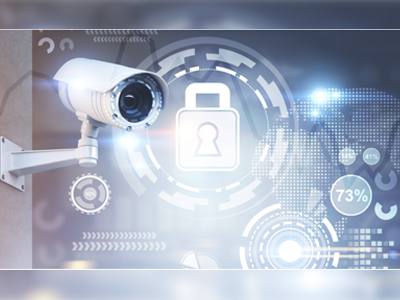Safely Managing and Deleting CCTV Footage: Best Practices for SD Cards, DVRs, NVRs, and PCs

Proper management and secure deletion of CCTV footage are crucial for maintaining the privacy and security of surveillance data. This guide covers the best practices for deleting CCTV footage from various storage devices, including SD cards, DVRs, NVRs, and PCs, while also addressing common misconceptions and the potential for recovering deleted footage.
A Common Misunderstanding
A widespread misconception is that once CCTV footage is deleted, it is permanently erased from existence. However, this is not always true. In some cases, deleted footage can be recovered, depending on the storage medium and the method used for deletion. Understanding the intricacies of this process is essential for anyone managing CCTV systems.
Is It Possible to Permanently Delete CCTV Footage?
Yes, it is possible to delete CCTV footage from different storage devices, but the effectiveness of this deletion depends on the type of storage and the method used. While modern CCTV systems incorporate strong security measures to prevent unauthorized access, including hacking attempts, it's still vital to implement best practices for data protection and deletion.
How to Delete CCTV Footage from an SD Card
To delete CCTV footage from an SD card, follow these steps:
1. Safely Eject the SD Card : Remove the SD card from the surveillance device carefully to avoid data corruption.
2. Insert the SD Card into a Computer : Use an SD card reader to connect the SD card to your computer or laptop.
3. Locate the SD Card : Open the file explorer and navigate to the SD card.
4. Delete the Desired Footage : Select the files you want to delete, right-click, and choose "Delete."
5. Permanently Remove Files : Empty the recycle bin or trash folder to ensure the files are permanently deleted.
Always back up important footage before deleting it, as this process is irreversible.
How to Delete CCTV Footage from DVR/NVR Systems
To delete footage from a DVR or NVR system, follow these steps:
1. Access the User Interface : Log into the DVR/NVR system using a computer or mobile device.
2. Navigate to the Footage Section : Go to the recorded footage or playback menu.
3. Select and Delete Footage : Choose the specific files or time range you wish to delete and select the "Delete" option.
4. Confirm Deletion : Follow any additional prompts to complete the process.
Ensure that crucial footage is backed up before deletion to avoid losing important data.
How to Delete Security Camera Data from a PC
To delete CCTV footage stored on a PC, follow these steps:
1. Open the Surveillance Software: Use the relevant software or file explorer to access the footage.
2. Locate the Footage: Navigate to the folder where the footage is stored.
3. Delete the Footage: Select the files you want to delete, right-click, and choose "Delete."
4. Permanently Remove Files: Empty the recycle bin or trash folder to permanently delete the files.
Refer to your surveillance software’s documentation for specific deletion options if necessary.
Deleting Individual Clips from CCTV Footage
To delete individual clips from CCTV footage:
1. Access the Playback Section: Open the playback or footage management section in the CCTV system's user interface.
2. Find the Clip: Locate the specific clip you want to delete.
3. Delete the Clip: Select the clip and look for an option like "Delete" or a trash bin icon.
4. Confirm the Deletion: Follow any prompts to confirm and complete the deletion.
This method is useful for freeing up space while retaining essential footage.
Retention Period of CCTV Footage
The duration for which CCTV footage is stored depends on several factors, including the storage capacity, system settings, and organizational policies. Here’s an overview:
1. Local Storage (SD Cards, DVRs, NVRs) : The retention period can vary from a few days to several weeks or months, depending on the storage capacity and recording settings. When the storage is full, older footage is usually overwritten.
2. Cloud Storage : For systems using cloud storage, the retention period is determined by the subscription plan or service agreement, ranging from days to years.
Ensure your CCTV system’s settings are configured to meet your specific needs and legal requirements regarding data retention.
Can CCTV Footage Be Recovered?
Recovering deleted CCTV footage is possible under certain circumstances, depending on factors like the storage medium, the deletion method, and how much time has passed since the deletion. If the storage space hasn’t been overwritten, data recovery software or forensic techniques might retrieve the deleted files. However, the chances of recovery diminish over time as new data overwrites the old.
Attempting to recover data on your own may cause further loss or damage. For critical situations, it's advisable to seek professional data recovery services with expertise in CCTV systems.
Conclusion
Effective management and deletion of CCTV footage are vital for maintaining the security and privacy of surveillance systems. Whether handling footage stored on SD cards, DVRs, NVRs, or PCs, following proper deletion procedures ensures that data is securely managed and unnecessary footage is appropriately disposed of.
Understanding how long footage is retained and the potential for recovery is also crucial in developing a comprehensive data management strategy. Regularly back up essential footage to prevent data loss, and stay updated on the latest advancements in CCTV technology to protect the integrity of your surveillance system.





.png)







